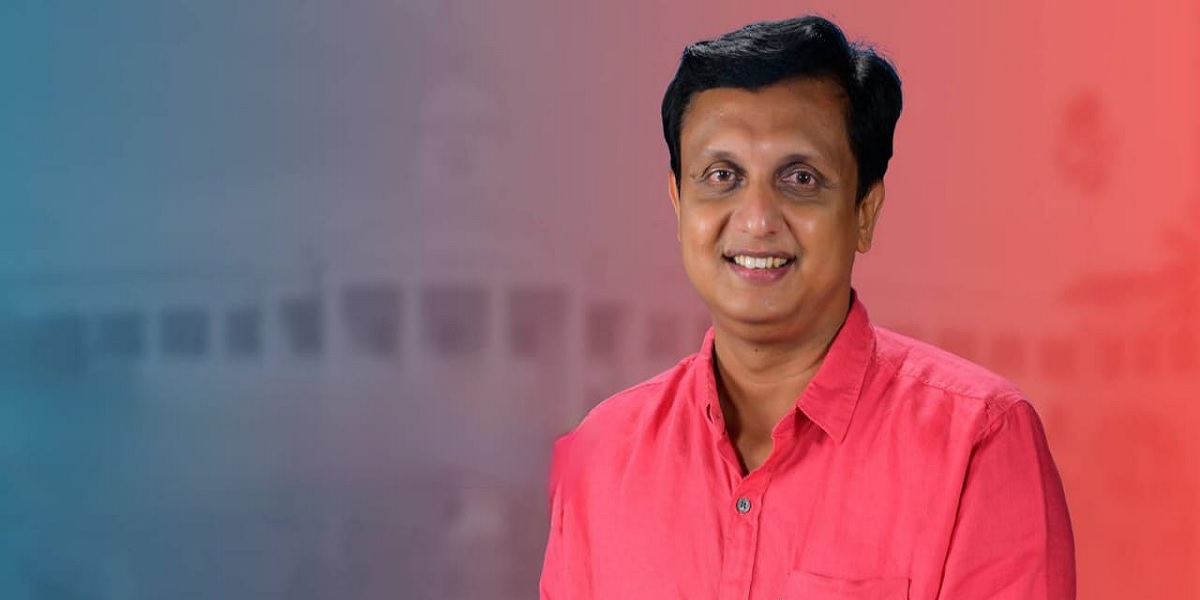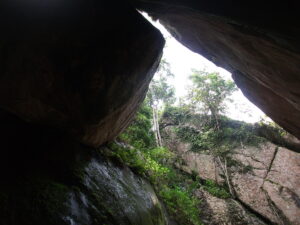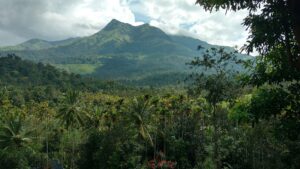Videos created by influencers from neighboring states have gained significant traction. Kerala plans to invite more influencers from nearby states to further boost Wayanad's tourism appeal, post the landslides near Meppadi.
Published Sep 27, 2024 | 1:22 PM ⚊ Updated Sep 27, 2024 | 7:39 PM

Minister for Public Works & Tourism P.A. Mohammed Riyas
The petroglyphs on Edakkal caves — or more specifically, rifts — hint at the Neolithic civilisation believed to have existed in Wayanad, a land of different hues of green that has for long attracted tourists seeking solace in nature’s tranquility.
In the early hours of 30 July, however, the tranquility was shattered by a series of landslides that rolled with the thunderous whirr of a thousand invisible helicopters, levelling villages, obliterating and upending lives as the loud patter of torrential rains played the perfect score for Nature’s thandav, an orgy of death and destruction.
The wounds caused by the landslides have not healed, the scar is still visible at and downhill Chooralmala — the epicenter of disaster — in Wayanad’s Meppadi, 12 km from Kalpetta town. The hilly district in Kerala that received a good share of its revenue from tourism spooked tourists as they feared more disasters.

A view from Edakkal cave. (Asif K Karim/Creative Commons)
Wayanad, however, could not remain in ashes forever. It is rising again, Phoenix-like, to soar high over the tourism landscape, reflecting the resilience of its people, and a basic rule of nature: life should go on.
The whole of Kerala is standing by Wayanad as it picks up pieces. Though knocked down by a brutal force, it is getting back on its feet to rebound, rebuild, and revitalise its tourism sector.
In an exclusive interview with South First, Kerala’s Minister for Tourism PA Mohammed Riyas shared the plan to put Wayanad on the road to recovery. Edited excerpts:
Q: What is the tourism department’s ‘Ente Keralam Ennum Sundaram’ (My Kerala is ever beautiful) initiative all about?
A: Wayanad has been recognised as a district with the highest tourism potential in Kerala. In light of the challenges presented by the recent devastating landslides, the tourism department has launched marketing campaigns aimed at revitalising tourism in the region.
These initiatives prominently showcase Wayanad with the engaging slogan, “Ente Keralam Ennum Sundaram,” which has gained significant traction on social media. Additionally, a promotional song was released by the tourism department a week ago to further augment these efforts.
The recent tragedy at Chooralmala and Mundakkai regions of the district led to significant cancellation of bookings in the hospitality sector, accompanied by a surge of negative narratives circulating on social media.
Following a strong promotional campaign, Wayanad emerged as a highly sought-after destination. Subsequently, securing accommodations in many resorts on weekends has turned out to be a difficult task due to the overwhelming influx of visitors.
We are also planning a Tribal Fest in Wayanad, which will significantly enhance the sector. Additionally, we aim to extend this initiative to other tourist destinations, promoting adventure and responsible tourism. The people of Kerala will serve as brand ambassadors to amplify these efforts.
Q: Collaborating with social media influencers seems like an interesting part of the initiative. What made you collaborate with them?
A: Social media has become a powerful tool in influencing travel choices, and as part of our recent campaign, influencers will visit key tourism spots in Wayanad to create content that showcases the district’s unique charm.

Chembra peak seen from Meppadi. (Stalinsunnykvj/Creative Commons)
Their experiences will highlight that Wayanad, like the rest of Kerala, remains as breathtaking as ever. This video content will be shared widely on social platforms to promote the district globally.
A few days ago, around 50 social media influencers from across South India pledged their strong support for Wayanad’s tourism initiatives. The campaign will be rolled out outside Kerala with the tagline, “Experience Kerala Season.” It aims to attract travellers from neighboring states and beyond.
I’m thrilled that the videos created by influencers from neighboring states have gained significant traction. We plan to invite more influencers from nearby states to further expand this initiative and boost Wayanad’s tourism appeal.
Q: You’re active in the digital space and follow the latest trends. Do you notice a difference in the response of youngsters?
A: Absolutely. People today are living a parallel life in the digital world, and it’s an entirely different space. This digital reflection is inevitable, especially when interacting with others. Youngsters, in particular, are now more informed about government programmes and initiatives, thanks to social media.
Through my personal Instagram and Facebook accounts, they have come to know me better. For me, this online support has positively impacted both the PWD and tourism departments. When I share a concept on social media, I receive immediate feedback from the public. People offer their ideas, suggestions, and even disagreements directly to me.
I frequently engage with them through comments, and the impact of these interactions is far greater than we might imagine.
Q: PM Narendra Modi has often posed for photos at various tourist spots, such as Lakshadweep, Mahabalipuram, etc., to promote those locations. However, he seems less inclined to promote Wayanad similarly. Could there be political reasons?
A: Prime Minister Modi visited the landslide-affected areas of Wayanad, and I had the opportunity to participate in meetings with him. During these discussions, he expressed himself very emotionally, and we all hope for immediate assistance from the central government. Unfortunately, that support has yet to materialise, but we remain optimistic that it will come soon.

The heart-shaped pond on Chembra Peak. (Wikimedia Commons)
It’s worth noting that Kerala has two central ministers, yet the Kerala BJP has adopted a negative stance toward developmental projects related to the landslides. This is unfortunate, as their disagreements with the LDF seem to have evolved into a broader disdain for Kerala, simply because we govern the state.
Additionally, we labelled the disaster in Chooralmala as the “Wayanad disaster.” I want to clarify that Wayanad is completely safe for tourists. I sincerely hope that everyone, including Prime Minister Modi, will cooperate with us for the benefit of the people of Wayanad and Kerala’s tourism sector.
Q: PWD rest houses, once overlooked, has become a popular choice among budget travellers, including solo women travellers. They have shifted from being less popular to becoming the preferred choice for many. What are your thoughts on this change?
A: On 1 November 2021, the LDF government launched an online booking system for the Public Works Department (PWD) rest houses, allowing the public to enjoy affordable accommodations.
Since its inception, this initiative has generated ₹19 crore in revenue, with over 3,00,000 people utilising the service. Guests can have secure rooms in the price range of ₹400 to ₹600, while comparable private hotels typically charge over ₹2,000 for similar quality.
The positive response has been overwhelming, and we are now planning to further enhance this initiative.
Q: The state government’s decision to limit Onam celebrations has drawn criticism from economists, who argue that without stimulating the economy, it will be challenging to rebuild the landslide-affected areas in Wayanad. Is emotion or economy more important for the government?
A: The landslide at Chooralmala remains a painful memory for all of us. I witnessed the anguish of the people firsthand. I never suggested that Malayalis shouldn’t celebrate Onam. I proposed to scale down government celebrations this time.
It was the right decision. For a communist government, prioritising the emotions of the people is paramount. We must acknowledge and respect those feelings.
(Edited by Majnu Babu).
